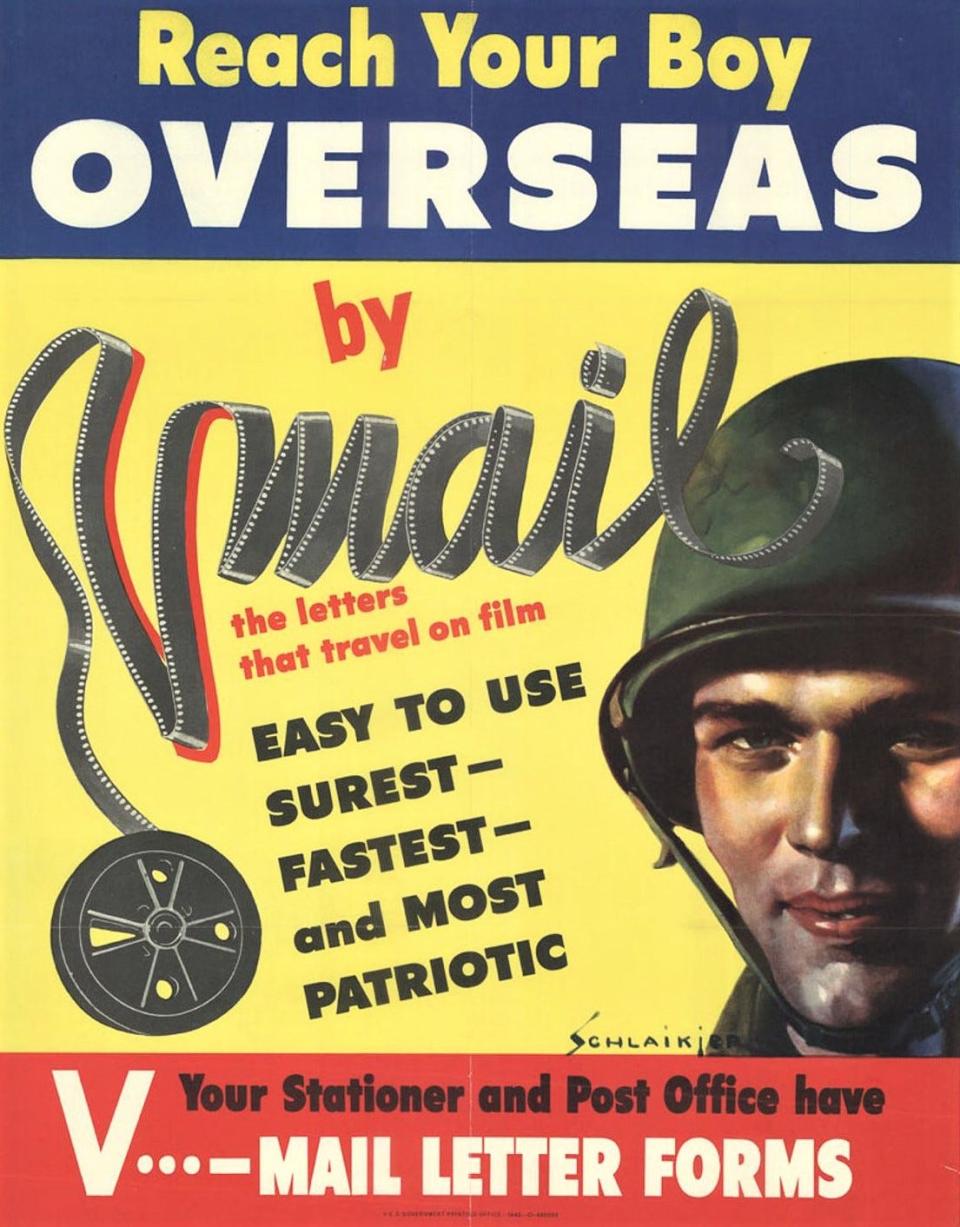V-mail kept World War II soldiers in touch with home faster
“It is therefore, with great feeling of pleasure and pride,” the Smyrna Times proclaimed on May 28, 1942, “that the David C, Harrison Post, No. 14, American Legion, and the Unit of the American Legion dedicates this column [titled “Dribbles”] to all men and women in the service of the United States.”
Dribbles proved to be successful, providing news of service men and women in far-flung places to the people back home in Delaware. Much of the success of the newspaper column was the result of an innovative technique that allowed letters from overseas to be received in Delaware promptly.
In the beginning of World War II, a letter written in Georgetown during early October might not reach its oversees destination until Thanksgiving. Airmail was faster, but the huge volume of letters that were sent to members of the armed forces made it impossible for the military to divert so many planes to deliver mail.

The American high command, however, recognized that a letter from home, affectionately known as a, “Five Minute Furlough,” had a big impact on troops; and in June, 1942, the Post Office came up with a solution to speed letters around the world.
A new, high-tech method was needed to provide soldiers with timely messages from home; and the Sussex Countian announced on Sept. 3, 1942, “The Navy Department today urged civilians to make use of the government’s new V-Mail system … to speed up their correspondence with friends and relatives in the armed services.”
The “V” in “V-Mail” stood for “Victory,” and the hyphen in V-Mail was printed as three dots and a dash, which is Morse code for the letter “V.”
After picking up a special V-mail form at Georgetown, Millsboro or other Sussex County post office, a resident of southern Delaware wrote a letter on the form, which was returned to the post office. The V-mail letter was sent to a special station where it was opened and read by a government censor who blacked out sensitive information. Soldiers in oversees bases followed the same procedure to send letters back home.
As the Sussex Countian explained on Sept. 3, 1942, “Letters under the new system are written on standard-sized blanks that are assembled and photographed on a 16-millimeter micra-film spool. Fast mail trains and air transports speed the film spools to bases near the addressees’ scene of duty and there the film is projected onto individual letter-size blanks which are sent to the addressees.”
The weight of the original letters was reduced from 2,575 pounds to just 45 pounds that could be easily carried aboard a plane.
On Sept. 30, 1943, Smyrna Times, printed several letters in the “Dribbles” column including a V-Mail letter from Pfc. Nelson Miles Staats to his mother in Dover that said, in part, “Somewhere in England … Good News! I’ve been to London, and I’ve seen ‘Chippy’ Bell. He has not changed one bit in appearance. Looks like he did two years ago. When our meeting took place, we had a rage old time together. The fun lasted for three days and almost three nights. During this time, we became lost during one of the blackouts. …Your loving son Miles.”

The newspaper commented, “Never would have thought that a V-mail letter from overseas could have contained so much writing until we read this one. It was typewritten right down to the bottom of the page.” V-Mail was not as fast as the Internet, but it was fast enough to keep Dribbles filled with timely news of Delaware troops serving abroad.
Principal sources
Smyrna Times, May 28, 1942; Sept. 30, 1943.
Sussex Countian, Sept. 3, 1942.
“Victory Mail Online Exhibit” Smithsonian National Postal Museum, http://www.postalmuseum.si.edu/victorymail/
This article originally appeared on Salisbury Daily Times: V-mail kept World War II soldiers in touch with home faster

